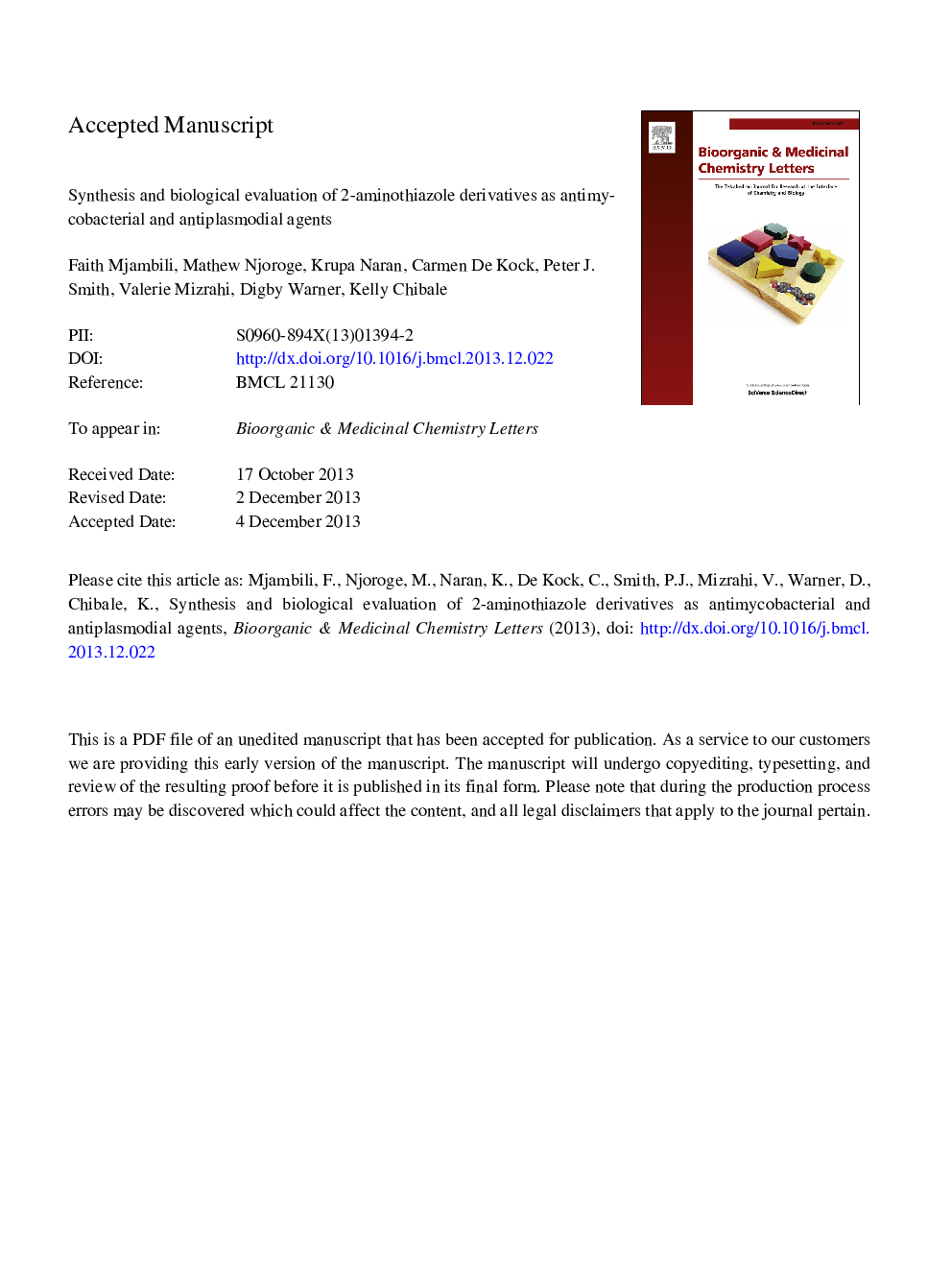| Article ID | Journal | Published Year | Pages | File Type |
|---|---|---|---|---|
| 10592939 | Bioorganic & Medicinal Chemistry Letters | 2014 | 8 Pages |
Abstract
A series of compounds derived from the 2-amino-4-(2-pyridyl) thiazole scaffold was synthesized and tested for in vitro antimycobacterial activity against the Mycobacterium tuberculosis H37Rv strain, antiplasmodial activity against the chloroquine sensitive NF54 Plasmodium falciparum strain and cytotoxicity on a mammalian cell line. Optimal antimycobacterial activity was found with compounds with a 2-pyridyl ring at position 4 of the thiazole scaffold, a substituted phenyl ring at the 2-amino position, and an amide linker between the scaffold and the substituted phenyl. The antiplasmodial activity was best with compounds that had the phenyl ring substituted with hydrophobic electron withdrawing groups.
Related Topics
Physical Sciences and Engineering
Chemistry
Organic Chemistry
Authors
Faith Mjambili, Mathew Njoroge, Krupa Naran, Carmen De Kock, Peter J. Smith, Valerie Mizrahi, Digby Warner, Kelly Chibale,
